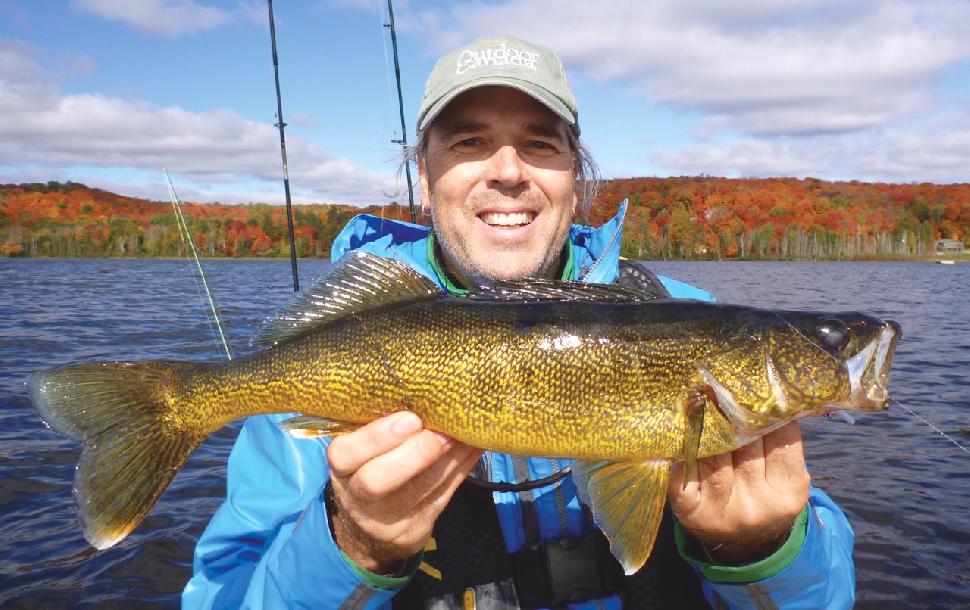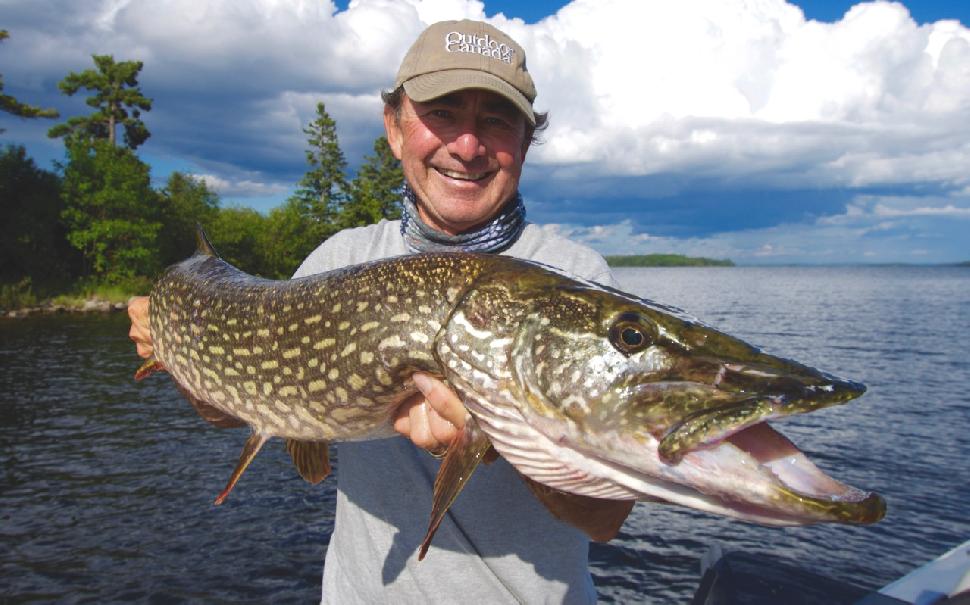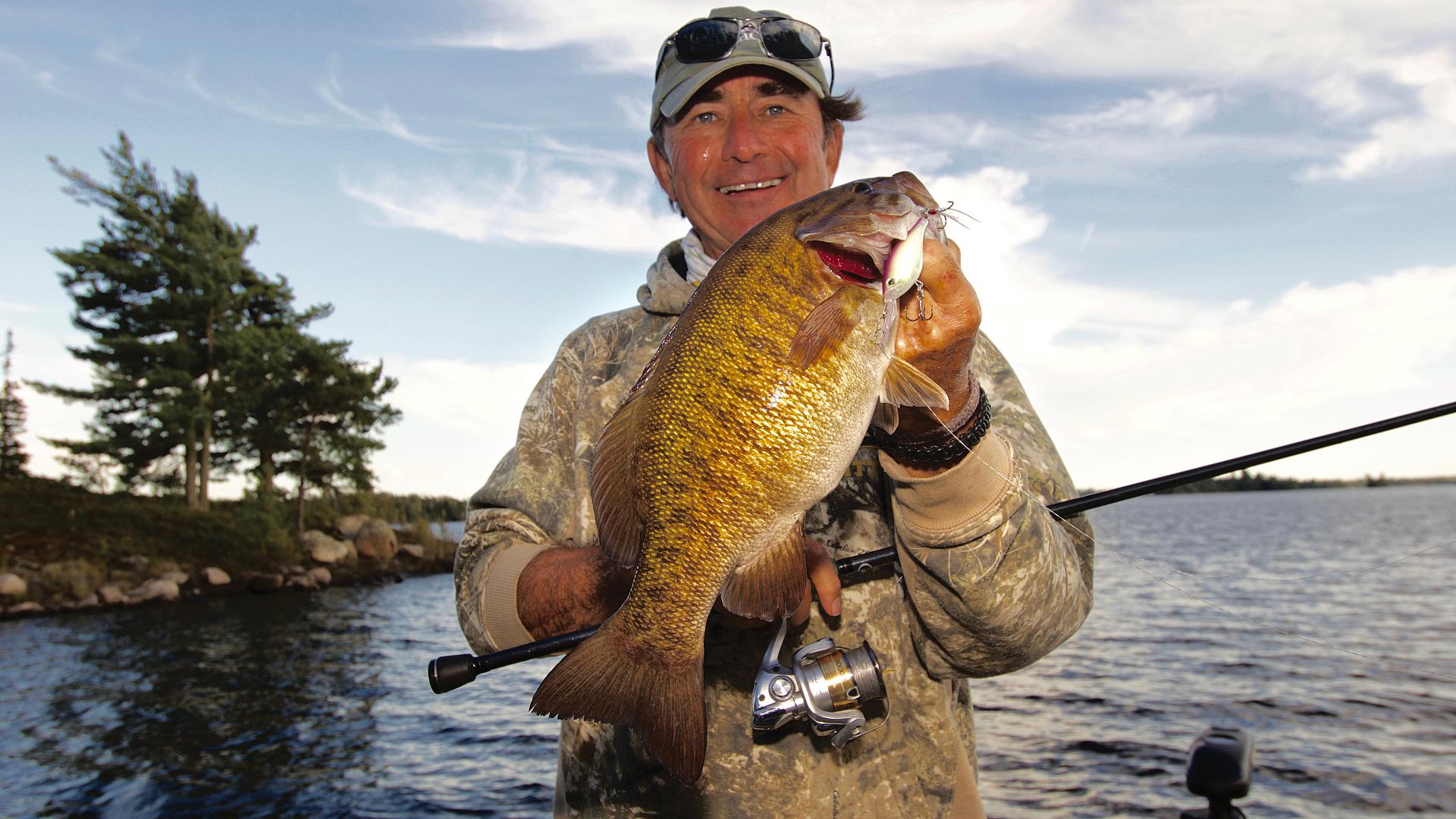FINDING FALL'S FISH
When lake temperatures change in the late season, the fish scatter and get tougher to catch—unless you know where to look
Advertisement

#3 WATCH THE WATER TEMPERATURE
Depending on where you live, turnover is usually completed by early to mid-October. At this point, your favourite lake should have a consistent water temperature from top to bottom, typically between 7°C and 12°C, depending on its depth. Shallower lakes undergo turnover earlier, and at warmer temperatures, than deeper, colder lakes. Regardless, fall turnover is now in full swing, aided by the wind and waves, and oxygen has been restored to the lake’s deeper basins.
As fall progresses, however, increasingly colder days and nights chill the surface waters faster than they can be mixed. When that happens, you start to find that the warmest water is increasingly deeper. Even more importantly, perhaps, is the fact that the water in the shallows goes through ever-greater daily fluctuations in temperature, from frigid lows at night to more moderate ranges during the day. When that happens, you can typically count on bass, black crappies, muskies, pike, walleye and yellow perch responding in two ways.
Advertisement
First, the fish will favour the stability associated with deeper main-lake structures in 20 to 40 feet of water, where the daily water temperature swings have little impact. So, these are prime areas for you to target. This doesn’t mean gamefish will avoid the shallows entirely, however. Bass, in particular, will scoot into waist- or even knee-deep water in the fall, but usually only during a spell of warm, unseasonable weather lasting more than two days. In certain situations, huge pike and muskies will also go shallow (see “Predator change-up” below).
The second response you can almost always count on is that the fish will frequent structure that provides a direct break between shallow and deep water, allowing them to move quickly to the surface or down deep without having to travel a long distance horizontally. One of my all-time favourite fall smallmouth locations, for example, is a rocky shoreline shoal that quickly drops from four feet of water to 38 down a 60-degree slope. If you fish it when the weather is overcast, windy and cold, you won’t get a bite. Come back after a half-dozen days of glorious, unseasonably warm weather, however, and the three- and four-pound smallies will slide up the slope in a matter of seconds and practically rip the rod from your hand. Find fast breaks like that and you’re in business.

Predator Change-up
In fall, most muskies and northern pike follow the fish crowds out onto ever-deeper structures, where the water is warmer and more stable. But some toothy critters love to break the rules. They’ll remain shallow and put up with the harsher conditions, attracted by the massive schools of ripe ciscoes and whitefish that are spawning at night on shallow, wave-washed, gravel-and-rock shorelines and reefs.
Advertisement
Several times, I’ve won the Molson Big Fish Contest by specifically targeting these massive, up-shallow fish as they feasted on staging spawners. In fact, it was on a mid-lake reef where ciscoes were spawning that I caught my personal-best muskie—a fish that, according to the length and girth formula, weighed 57½ pounds. Trolling a silver herring-like lure in seven feet of water, I hooked the giant during the last week of November in a blinding snowstorm.

